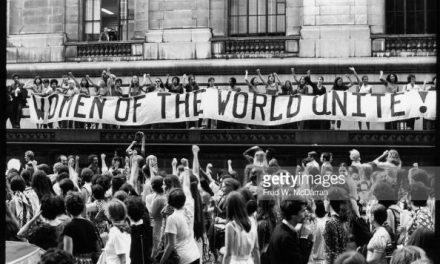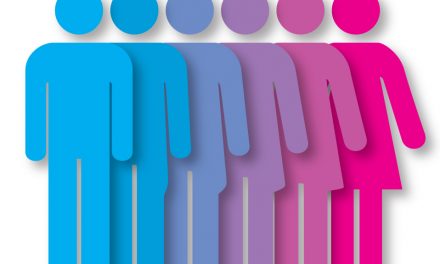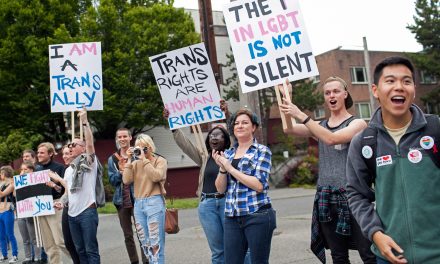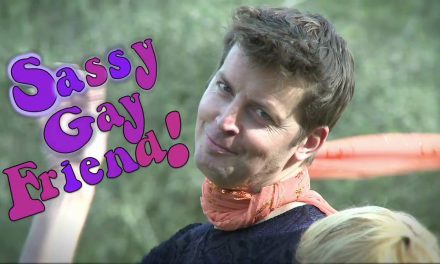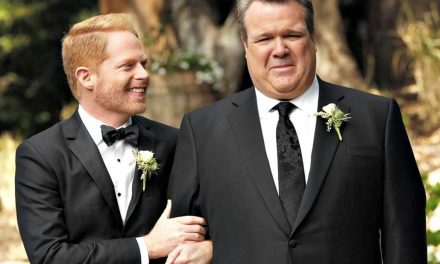
Calzona: The Good and The Bad
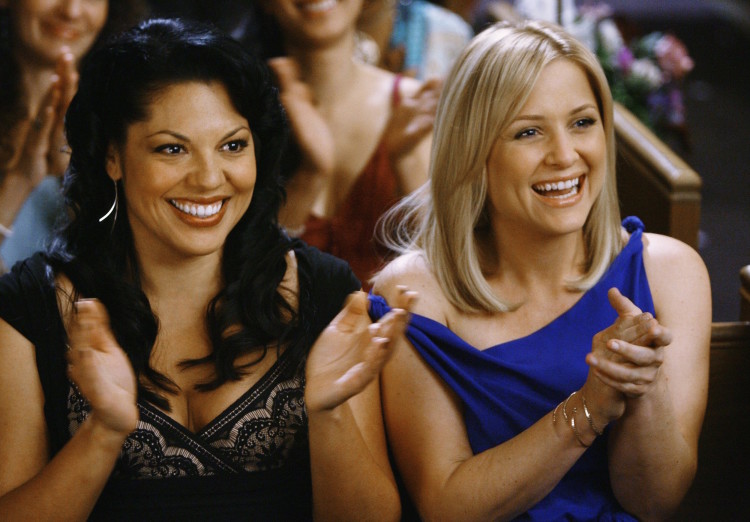
Lesbians and bisexual women have been two of the most underrepresented and misrepresented groups in the media. The portrayals of these types of characters and their relationships have been traditionally nonexistent or inaccurate in many ways. There are only 12 lesbian characters and 16 bisexual female characters on broadcast television (series regulars and recurring characters) at the moment. There have been strides to better represent them in the past few years, but Shonda Rhimes was one of the first people in television to really give a lesbian and a bisexual female character a long, meaningful and impactful storyline and relationship. The journeys of Calliope “Callie” Torres and Arizona Robbins on ABC’s Grey’s Anatomy captured the hearts of many TV viewers in a way a same-sex relationship had not done before. The separate and joint stories of Callie, a newly realized bisexual woman, and Arizona, a long-time lesbian, inspired many discussions about bisexuality and lesbianism. There are many things to love about how these women are represented in the show, but nothing is perfect. As much as people love these two separately and as a couple, there are also many complaints about the way these characters are handled by the writers of the show.

2016 statistics on LGBTQ characters on broadcast networks (including ABC). Credit: http://www.glaad.org/whereweareontv16
Validating Bisexuality
Callie Torres was originally understood as a heterosexual woman on the show. She had sexual relationships and even a marriage to a man. She eventually finds herself romantically interested in another female character, Erica Hahn. This is the first time either of the characters had been with another woman. After a sexual encounter, Erica gives a speech to Callie about how being with her made her whole life seem clear. Erica was sure now that she was a lesbian (a woman only attracted to other women). Callie, on the other hand, was not so sure. She engaged in sex with her male best friend, Mark Sloan, in the same day to see if she was less satisfied with sex with a man after she realized she enjoyed sex with a woman. To Callie’s upset, she felt no difference. Mark convinced her that nothing is wrong with having an attraction to both men and women.
This attraction to two genders is called bisexuality. It was in that moment with Mark that Callie realized hers. After coming clean to Erica about her infidelity with Mark, Erica made a statement that represents many people’s views on bisexuality. She told Callie, “You can’t kind of be a lesbian,” (0:58). All of these moments were important because they showed the social attitude towards bisexuality. People tend to feel bisexual people are confused or that they are “half-straight” or “half-gay.” Erica saying that to Callie tried to invalidate the idea that people can be attracted to more than one gender. And although Callie was initially confused about her bisexuality, the show did a great job at showing her journey to owning it and showing the world that bisexuality is a real thing. Throughout the rest of Callie’s time on the show she would only be in serious relationships with women, but she still engaged in sexual relationships and flirtations with men. The show really showed through Callie that bisexuality is not about picking sides but just finding interest in people for who they are, no matter their gender.
Biphobia
The way Callie and other people handled her sexuality sparked much conversation about the issues of bisexuality, especially when she got into a relationship with Arizona Robbins. When the audience is initially introduced to Arizona there is no information about her sexuality. It wasn’t until her courtship with Callie that it is revealed she is a lesbian and has identified as one for most of her life. This relationship between a longtime lesbian and a newfound bisexual woman set stage for many moments of biphobia on the show.
Biphobia is the belief of negative stereotypes towards bisexual people or that bisexuality is not a real sexual orientation. Many people inside and outside of the LGBTQ community feel that bisexual people are confused, unfaithful, selfish, seeking attention, or promiscuous. It’s an issue that many people don’t talk about but that is portrayed in the media all of the time. Arizona exhibited some of these actions many times, even if not intentionally. One of the first moments is when Callie expressed that she had to tell Arizona something important. Arizona’s initial reaction was that Callie was sleeping with Mark again and that she was “one of those fake lesbians just taking a vacation in Lesbian Land,” (0:00-0:32). To make assumptions that a bisexual character is being unfaithful and that she is faking her attraction to women for self-enjoyment is biphobic. It suggests that bisexual people have no control and that they just freely jump between men and women just because they are attracted to both.

Mark, Callie, and Arizona at their first OB/GYN visit. Credit: ABC
In a later season Callie and Arizona break up, and Arizona moves to another country for work. Callie is hurt and tries to find comfort in the situation by engaging in sex with her best friend Mark. Arizona comes back for Callie only to find out that Callie is now pregnant with Mark’s child. Arizona’s human emotions take over but this situation brings about more biphobic moments in the show. One of those moments was Arizona expressing how angry she is that Callie had sex with someone else and that it makes her even angrier that the person she had sex with has a penis and she knows that Callie is bisexual (0:00-0:30). Arizona’s insecurities allowed her to make Callie feel guilty for also being attracted to men. This is a real situation that some bisexual people face. They have to constantly reassure their partners that they are enough for them because their partners feel like they don’t have something that they need. Callie struggled with not feeling “lesbian enough” for Arizona many times because of situations like this. To make bisexual people have to always ignore the fact that they are attracted to another gender other than that of the person they’re in a relationship with is biphobic. It is erasing the identity of what bisexuality really is.
Eventually, Arizona reluctantly agrees to parent the child along with Callie and Mark. In the months leading up to the birth of their child, the three struggle with how they are going to parent the child. Arizona starts getting annoyed with the situation and states that she didn’t ask for this life. She tells Callie that it’s her “bi-dream” come true (1:03) that she gets the woman that she loves and a baby by her male best friend, who is also a great for sex. There was another moment where Arizona expressed to Callie that Mark gets the “straight” Callie while she only gets the “gay” Callie, which is not much of her (0:33-1:02). Although Arizona’s emotions are real and she has the right to have them, many of her comments are harmful towards the social perception of bisexuality. To suggest that bisexual people have this dream where they can have a man and a woman in their life is insinuating that they are selfish and greedy. It suggests that bisexual people want it all and will do anything to get it. Also, Arizona suggesting that Callie has different parts of her because she is bisexual is biphobic. Those comments make it seem like her attractions can be turned on and off depending on the circumstance and that her sexuality defines how she acts as a person. Having a bisexual character such as Callie that has an impactful storyline is important for television, but the writers have to be careful of not sending biphobic messages to the masses.
Heteronormativity
Heteronormativity is the belief that heterosexuality is the only natural sexuality. Also, it is the normalization of behaviors that enforce a gender binary (male and female being two distinct, separate and opposite groups) belief. Even with many heterosexual couples on the show, Callie and Arizona were a true fan favorite. There are many moments of heteronormativity in Grey’s Anatomy (which is expected because heteronormativity is hard to break away from in this society), but the show did a great job at showing this same-sex couple in the same light that it showed heterosexual couples. They were not more or less sexualized than the other couples nor did they have more or less issues than the other couples. They faced certain adversities that come from society and biology that the other couples didn’t have to face, but that’s the real world experience for two women in a relationship. The show really showed that a same-sex relationship is just as normal as a heterosexual one. The sex between them wasn’t a taboo subject. They were able to speak about their problems freely and normally just as everyone else. Callie and Arizona were not just some “other” or “odd” relationship on the show; they were just another relationship that was enjoyable to watch. Being able to show that heterosexuality is not the only natural sexuality is something that is important. The ups and downs of attraction and relationships are the same between all people, no matter their sexuality.
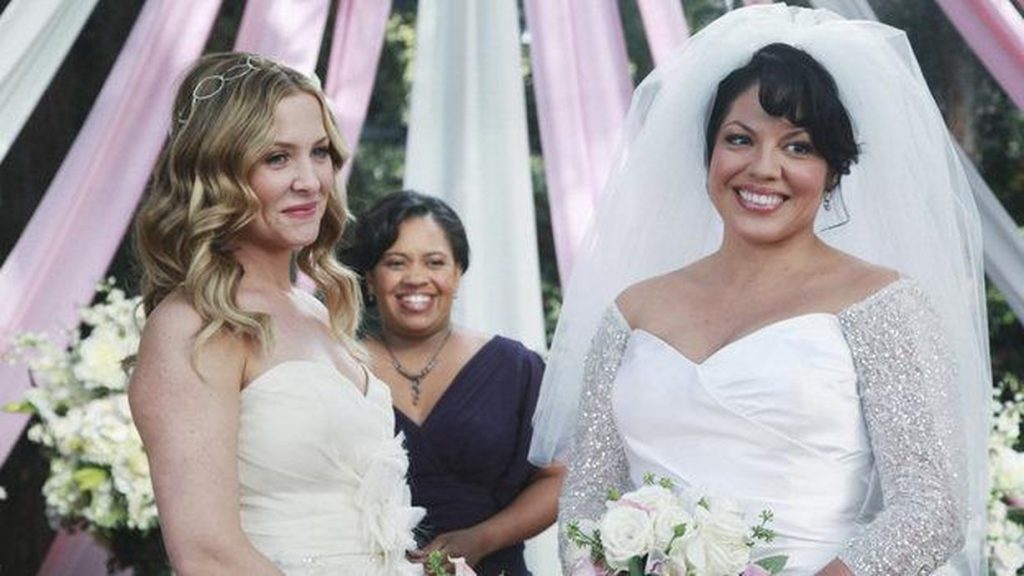
Callie and Arizona’s wedding. Credit: ABC
Even with same-sex relationships people look for heteronormative traits to try to normalize what they perceive as an unnatural relationship. Society expects one partner to be the “man” and the other to be the “woman” in the relationship. What was appreciated in the relationship of Callie and Arizona is there was no assuming of these expected roles. One woman did not do all the “man” things in a relationship while the other did all of the “woman” things. While Callie would do things that society would say were “man” roles such as plan Valentine’s dates or surprise Arizona with a ring, she also was the one who was willing to have the baby that the couple planned to have. There was no conversation about which one of them should be the one to propose. Arizona just asked Callie to marry her when the time felt right. On their wedding day, both of the women wore big, white wedding gowns. There were no comments about how the women chose to express themselves; it was just a celebration of love. The show allowed these characters to let go of the roles that society expected them to play and to just exist in a relationship as who they were and how they felt in these different moments. Although some same-sex relationship have these roles because of how the people in the relationship choose to express their gender, it’s important to see that every relationship does not have to be based on heteronormative ideas.
Performing Femininity as a Lesbian/Bisexual Women & Social Acceptance
Femininity is the way females perform their gender. There are social norms for what constitutes being feminine, but every female has her own expression of femininity. Both Callie and Arizona exuded a very socially acceptable idea of being feminine. They both wore makeup, dresses, jewelry, heels, and all of the other things society would deem as “feminine.” They are what are considered “lipstick lesbians.” It was good that these characters weren’t the stereotypes of what the society feels like a relationship between two women should look like. They showed audiences that may not have had experience with lesbians/bisexual women that not all of them lean toward expressing themselves in a masculine way. These two characters performed their femininity just like the heterosexual women on the show, which some people may or may not feel is a good thing.
To see two women in a relationship together and one not be masculine challenges society’s everyday idea of what a same-sex relationship between women looks like, but it falls right into the media’s trap of making these relationships more palatable to consumers. The show did not accurately display the different types of lesbian and bisexual women out there. It would be great to believe the sole intention behind these two women being displayed as “lipstick lesbians” was to break society’s idea of what all lesbian/bisexual woman look like, but the reason was probably to make the relationship easier to view. People tend to be more willing to view two hyper-feminine women in a relationship than a relationship in which one or both of the women are more masculine.

Arizona’s current love interest, Eliza Minnick. Credit: ABC/Kelsey McNeal
If Callie and Arizona were the only cases of “lipstick lesbians” on the show then it could be believed that the minds behind Grey’s Anatomy had good intentions. But even outside of the Callie and Arizona relationship, the lesbians/bisexual women on the show were all hyper-feminine. All of Callie’s relationships and flirtations with women, before and after Arizona, were with hyper-feminine women. This also goes for all of Arizona’s relationships and flirtations during and after her relationship with Callie. All of the lesbian and bisexual women on the show (most of which are played by heterosexual actresses) would be assumed heterosexual by society if their storylines did not reveal otherwise. This tactic makes having a same-sex relationship easier to accept by the masses, but it does no justice for the many types of lesbian/bisexual women in the real world and their different experiences.
To have a lesbian and a bisexual woman be such well developed, impactful, and beloved characters on a show is a big step towards representation for all people in the media. But if these people are going to be represented, the media has to make sure to accurately portray them and not feed audiences perceptions that might further promote stereotypes or encourage negative thinking towards these groups of people. Callie Torres and Arizona Robbins are written as characters that have real human actions and emotions, so it is understandable that everything is not portrayed perfectly and beautifully. But if there is going to be progress towards accurate representation, it is important that the good and the bad of these portrayals are discussed.
Feature Image Credits: ABC

